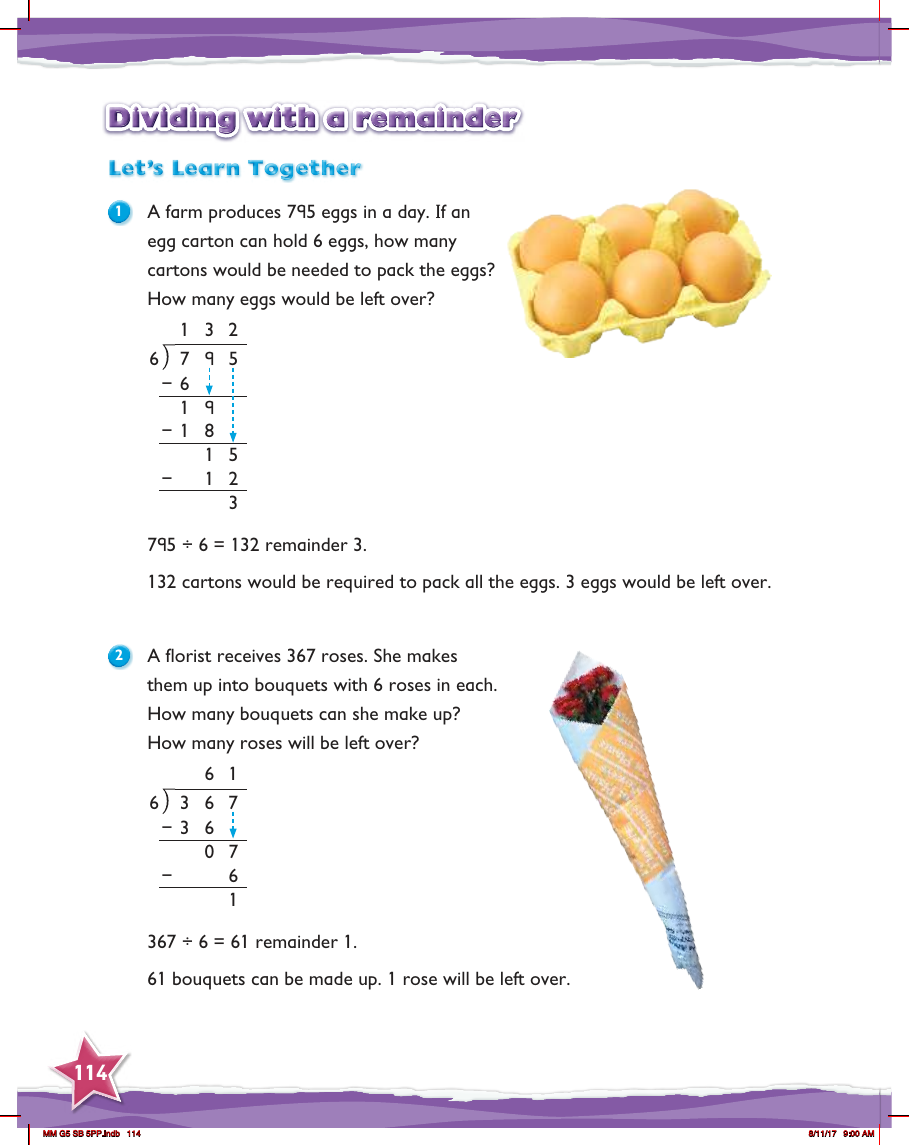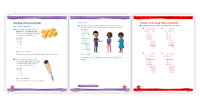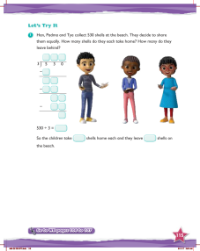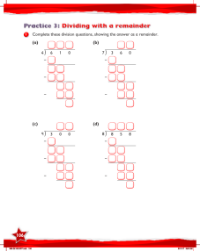Max Maths, Year 5, Learn together, Dividing with a remainder

Maths Resource Description
In the Max Maths curriculum for Year 5, one of the concepts explored is dividing with a remainder. This is an important skill that helps students understand division in real-world contexts where the numbers don't always divide evenly. For example, consider a farm that produces 795 eggs in a single day. If each egg carton holds 6 eggs, the question posed to the students is how many cartons will be needed to pack all the eggs and how many eggs will be left over. Through long division, students find that 795 divided by 6 equals 132 with a remainder of 3. This means that 132 cartons are needed to pack the eggs, and there would be 3 eggs without a carton.
Another practical application presented is of a florist who receives 367 roses and plans to arrange them into bouquets, each containing 6 roses. Students must determine the number of bouquets the florist can create and the number of roses that will not be included in a bouquet. By dividing 367 by 6, they calculate that the florist can make 61 bouquets with 1 rose left over. These examples not only teach division with remainders but also illustrate how this mathematical concept is used in everyday situations, enhancing the students' problem-solving skills.


